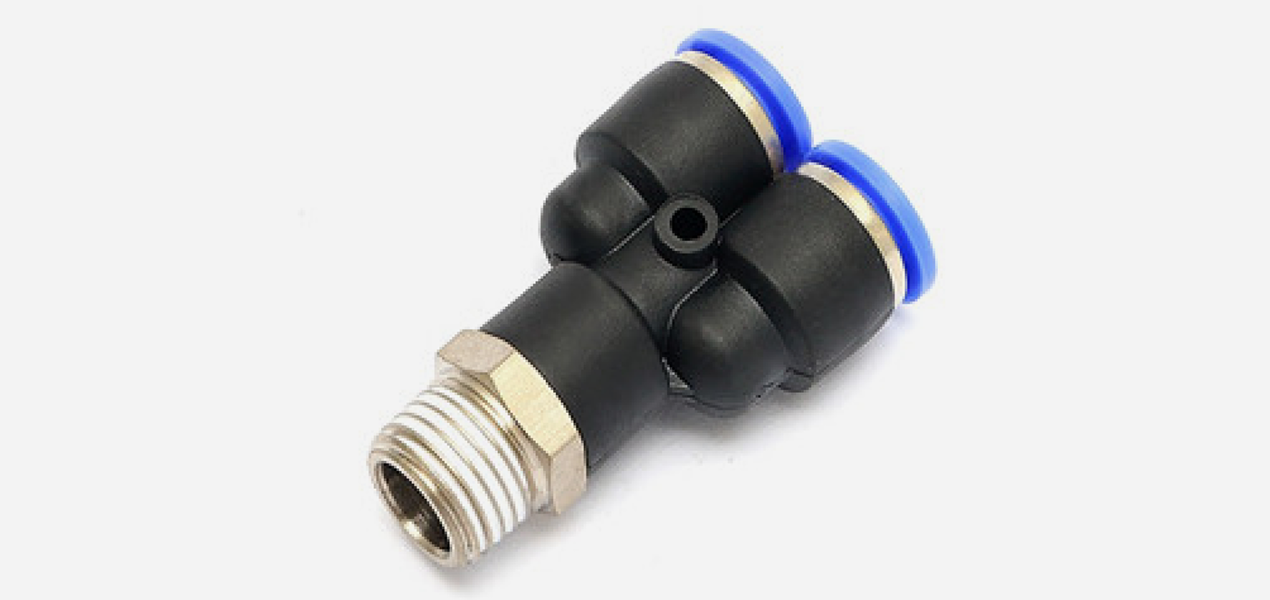Preparation and installation methods of three-way quick-connect connectors
Home ✦
Industry Knowledge ✦
Preparation and installation methods of three-way quick-connect connectors

Preparation and installation methods of three-way quick-connect connectors
With the development of industry today, pipeline connection has become more and more common. As one of the important accessories in pipeline connection, three-way quick-connect fittings are often used to divide and merge fluids or gases in pipelines. However, do you know that they need to be prepared before installation?
1. Preparation
Confirm whether the model and specification of the joint are correct, as well as the connection method of the pipeline. After confirmation, proceed with the following preparations:
(1) Clean the installation area: Clean the pipe connection area to ensure that there is no impurities such as grease, welding slag, or rust that affect the installation and connection of the joint.
(2) Prepare installation tools: You need to prepare tools such as wrenches, pliers, spanners and bolts, as well as corresponding sealing materials, lubricating materials, etc.
(3) Check one by one: Check whether all pipes and three-way quick-connect fittings that need to be connected meet the installation requirements, confirm whether the direction and angle of each joint are correct, and whether there is any damage, deformation or corrosion.
2. Installation method
(1) Apply sealing material: Apply special sealant or similar lubricating material to the connection port of the joint to increase the sealing performance; in addition, pay attention to the use of easily removable sealing materials to facilitate future pipeline maintenance and adjustment work.
(2) Port connection: Apply lubricant to the ports, connect the joints to the ports of the two pipes, and tighten the bolts and nuts with a wrench. Be careful not to overtighten or over-loosen to ensure the sealing performance of the connection.
(3) Angle adjustment: Since the three-way quick-connect fitting sometimes needs to be adjusted in angle to suit special pipe connection conditions, the angle can be adjusted using professional equipment such as a wrench or a cutter. After adjustment, the bolts and nuts need to be retightened.
(4) Perform static screw torque test: After installing the joint, a static screw torque test is required to ensure that the bolts and nuts are in the proper tightness state to avoid leakage problems when connecting the pipes. Professional equipment such as calipers and torque wrenches are required for the test.
When installing the three-way quick-connect fitting, you need to strictly follow the requirements in the instructions to ensure that the connection is firm, the angle is correct, and the tightness is appropriate. After installation, you can perform a static screw torque test to ensure that the pipe connection is firm and stable.
1. Preparation
Confirm whether the model and specification of the joint are correct, as well as the connection method of the pipeline. After confirmation, proceed with the following preparations:
(1) Clean the installation area: Clean the pipe connection area to ensure that there is no impurities such as grease, welding slag, or rust that affect the installation and connection of the joint.
(2) Prepare installation tools: You need to prepare tools such as wrenches, pliers, spanners and bolts, as well as corresponding sealing materials, lubricating materials, etc.
(3) Check one by one: Check whether all pipes and three-way quick-connect fittings that need to be connected meet the installation requirements, confirm whether the direction and angle of each joint are correct, and whether there is any damage, deformation or corrosion.
2. Installation method
(1) Apply sealing material: Apply special sealant or similar lubricating material to the connection port of the joint to increase the sealing performance; in addition, pay attention to the use of easily removable sealing materials to facilitate future pipeline maintenance and adjustment work.
(2) Port connection: Apply lubricant to the ports, connect the joints to the ports of the two pipes, and tighten the bolts and nuts with a wrench. Be careful not to overtighten or over-loosen to ensure the sealing performance of the connection.
(3) Angle adjustment: Since the three-way quick-connect fitting sometimes needs to be adjusted in angle to suit special pipe connection conditions, the angle can be adjusted using professional equipment such as a wrench or a cutter. After adjustment, the bolts and nuts need to be retightened.
(4) Perform static screw torque test: After installing the joint, a static screw torque test is required to ensure that the bolts and nuts are in the proper tightness state to avoid leakage problems when connecting the pipes. Professional equipment such as calipers and torque wrenches are required for the test.
When installing the three-way quick-connect fitting, you need to strictly follow the requirements in the instructions to ensure that the connection is firm, the angle is correct, and the tightness is appropriate. After installation, you can perform a static screw torque test to ensure that the pipe connection is firm and stable.

